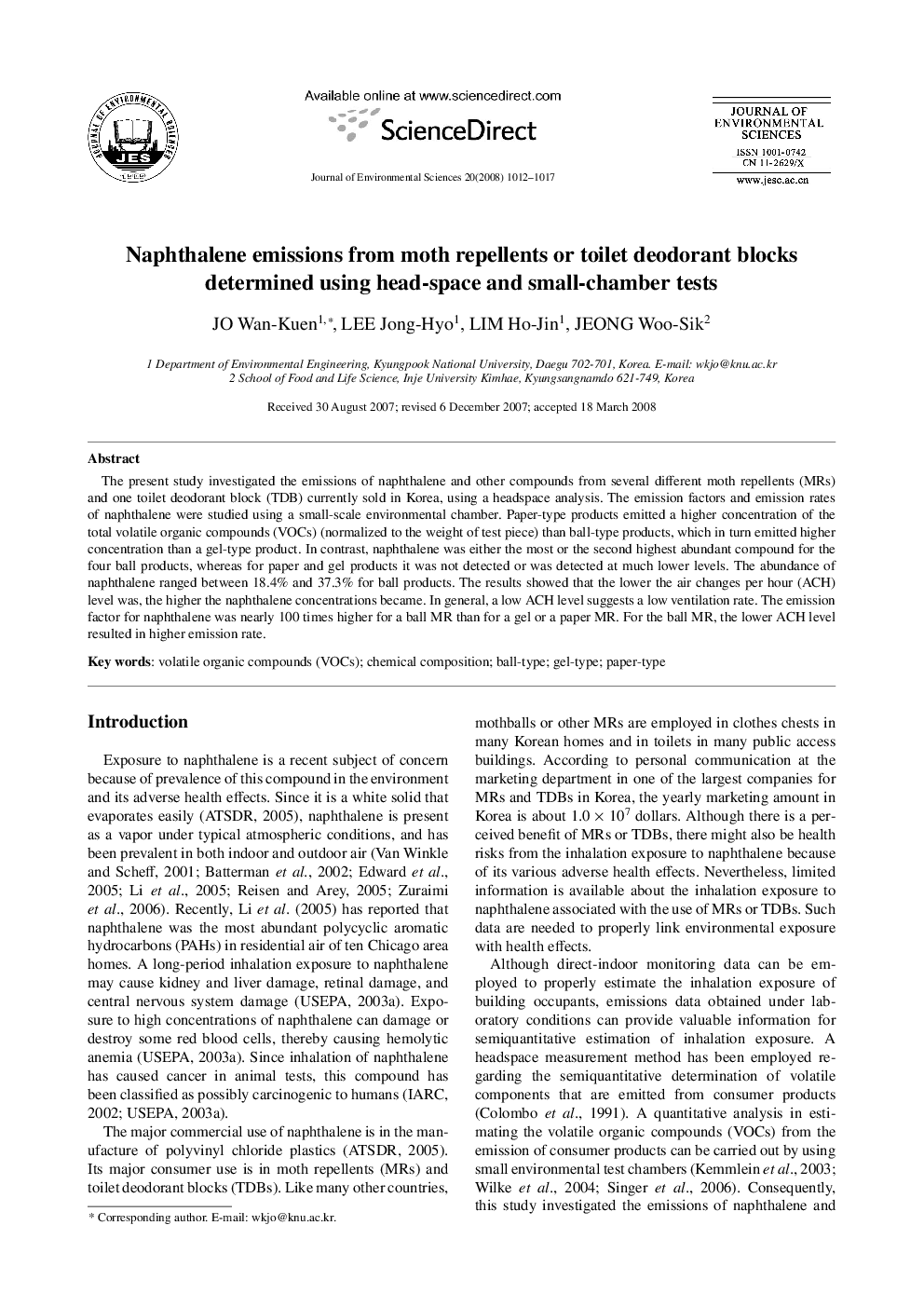| کد مقاله | کد نشریه | سال انتشار | مقاله انگلیسی | نسخه تمام متن |
|---|---|---|---|---|
| 4455660 | 1312526 | 2008 | 6 صفحه PDF | دانلود رایگان |

The present study investigated the emissions of naphthalene and other compounds from several different moth repellents (MRs) and one toilet deodorant block (TDB) currently sold in Korea, using a headspace analysis. The emission factors and emission rates of naphthalene were studied using a small-scale environmental chamber. Paper-type products emitted a higher concentration of the total volatile organic compounds (VOCs) (normalized to the weight of test piece) than ball-type products, which in turn emitted higher concentration than a gel-type product. In contrast, naphthalene was either the most or the second highest abundant compound for the four ball products, whereas for paper and gel products it was not detected or was detected at much lower levels. The abundance of naphthalene ranged between 18.4% and 37.3% for ball products. The results showed that the lower the air changes per hour (ACH) level was, the higher the naphthalene concentrations became. In general, a low ACH level suggests a low ventilation rate. The emission factor for naphthalene was nearly 100 times higher for a ball MR than for a gel or a paper MR. For the ball MR, the lower ACH level resulted in higher emission rate.
Journal: Journal of Environmental Sciences - Volume 20, Issue 8, 2008, Pages 1012-1017